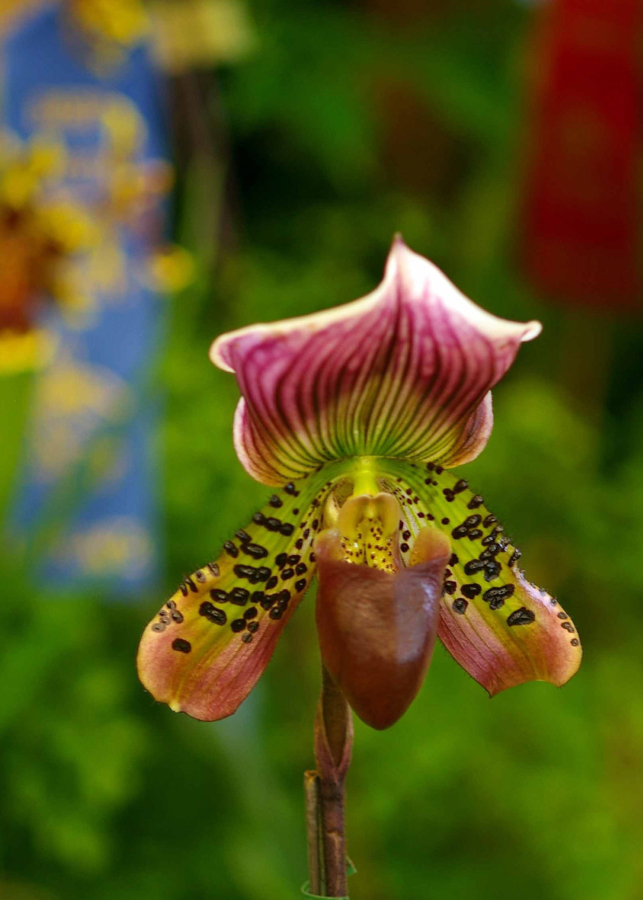It looks like it would gobble up an unsuspecting pollinator but instead the pouch called a labellum is simply nature’s method of getting a pollination program underway. The pollinator flies into the pouch and most likely finds it a little work to escape all the while either picking up pollen or making a deposit before finding freedom.
This wonder of nature occurs in lady slipper orchids which is a spectacle that can be enjoyed by the whole family.
Lady slipper orchids are found in five genera. Cypripedium, which are terrestrial, have the ability to transform a garden into one of rare beauty. They are cold hardy and eleven species are native to the United States. One, the showy lady slipper, is even the state flower of Minnesota.
Mexipedium, Selenipedium, Phragmipedium, and Paphiopedilum are all tropical in nature. It is the latter that I am touting here as it is considered to be among the easiest orchids to grow for the novice home gardener.
They are so loved that it is believed there are now 13,000 plus hybrids of this genus alone.
Despite the fact that the Deep South Orchid Society maintains the Coastal Georgia Botanical Gardens orchid house and it is mere steps from my office, it was the Savannah Orchid Show that caused me to be forever mesmerized by the lady slipper orchids.
The one that first caught my eye was Raisin Jack No. 5 x No. 7. I’ll be honest, the names, especially with the hybrids, are a little mind-boggling and confusing, to say the least.
A walk through our orchid house reveals orchids with varying sizes of pseudobulbs which act as a water storage reservoir. The Paphiopedilum lady slipper orchid has no such device meaning they will need watering more frequently. Those grown in bark will need water more often than those grown in moss.
Leaching of nutrients is bound to occur, so feeding regularly is recommended with about a quarter-strength water-soluble balanced fertilizer is recommended weekly.
Getting close-up look
There is no place like an orchid show to get the whole family involved in one of America’s great past times.
I assure you your children and grandchildren will be enthralled as they learn about lady slipper orchids and the way pollinators fly into the pouch.
A look at the American Orchid Society calendar of events, www.aos.org/news-events.aspx, will help you locate a show near you.
Not only will you have a chance to see the beauty of the blooms up close, but you can learn the techniques of growing them and even get assistance repotting your own orchid.
Though I have only been raving about lady slipper orchids I assure you there will be more species on display than you ever knew existed.



